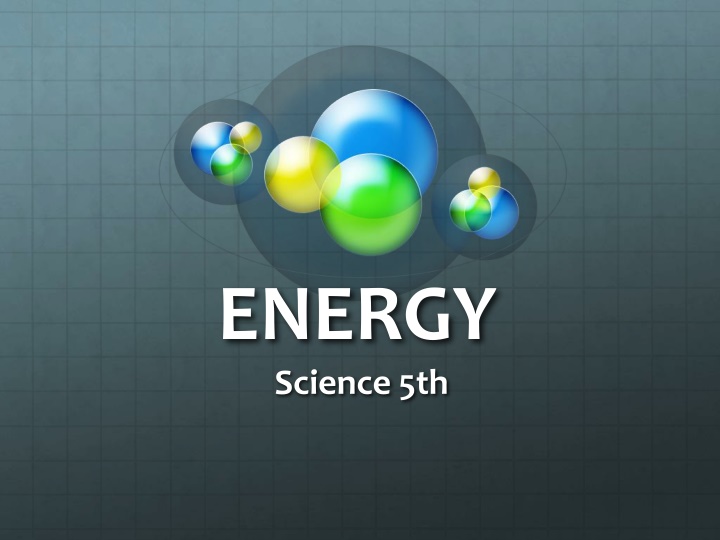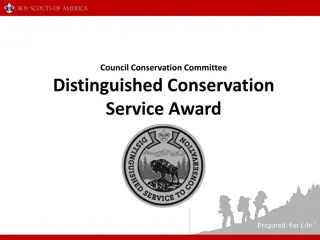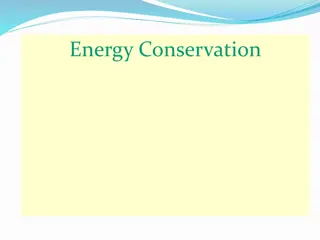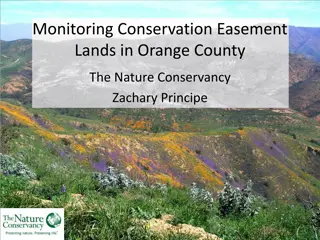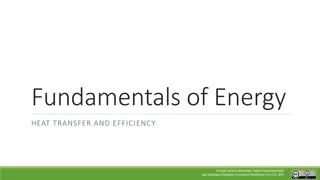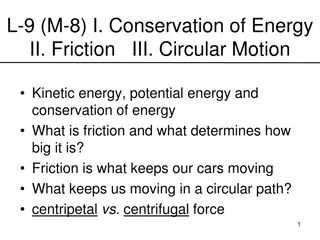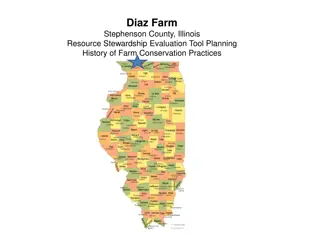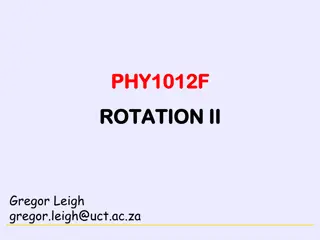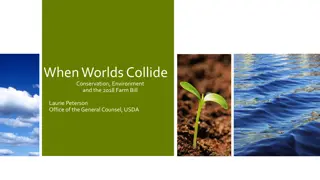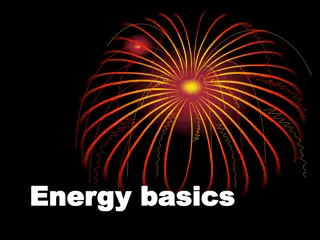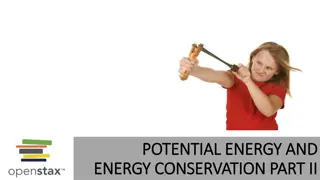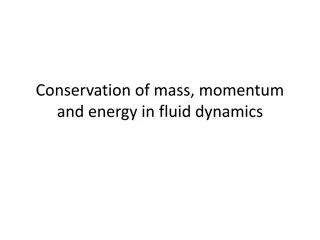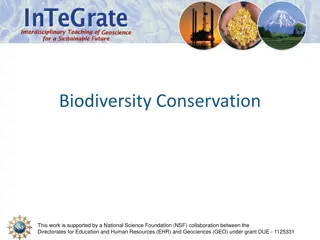Energy and Conservation
Energy is the capacity to change things and the force that powers us. Discover the forms of energy, how to obtain and save it, and its importance in our daily lives. Explore the various sources of renewable and nonrenewable energy and simple ways to conserve energy in our daily activities.
Download Presentation

Please find below an Image/Link to download the presentation.
The content on the website is provided AS IS for your information and personal use only. It may not be sold, licensed, or shared on other websites without obtaining consent from the author.If you encounter any issues during the download, it is possible that the publisher has removed the file from their server.
You are allowed to download the files provided on this website for personal or commercial use, subject to the condition that they are used lawfully. All files are the property of their respective owners.
The content on the website is provided AS IS for your information and personal use only. It may not be sold, licensed, or shared on other websites without obtaining consent from the author.
E N D
Presentation Transcript
ENERGY Science 5th
WHAT IS ENERGY? Watch this funny video in order to understandwhat energyis and how can we save it. https://www.youtube.com/watch?v=wyVF6R9e6xE Energy is... The capacity to change things and the force that a person has. We can obtain energy by... Food, water, sun, coal... Energy is the power that allows us to do things. Usually we can t see it or touch it but it s all around us. Energy can take form or light, sound, heat or movement. It can power machines.
WHAT IS ENERGY? It can change from one form to another too. For example, when you turn on a light, the electricity transforms into light and thermal energy. https://www.youtube.com/watch?v=ycdke8MTSCI
HOW CAN WE OBTAIN ENERGY? We can obtain energy by different sources such us: sun, wind, water, food, coal, gas... There are two kinds of energy: RENEWABLE UNRENEWABLE Sun Water Food Wind Wood Gas Fuel: oil, petrol, diesel... Coal
HOW CAN WE SAVE ENERGY? We can save energy doing small things every day: - Switch off lights. - Use energy saving lights bulbs. - Use the natural light. - Switch off the TV if you re playing with another thing. - Charge the gadgets for a short time. - Walk or ride in order to not use transports.
FORMS OF ENERGY There are six forms of energy! Find them on this website! http://www.cpalms.org/Uploads/resources/4655 0/2/14/docs/Six Forms of Energy-Explain Powerpoint.pdf
FORMS OF ENERGY LIGHT ENERGY SOUND ENERGY HEAT/THERMAL ENERGY ELECTRICAL ENERGY CHEMICAL ENERGY MECHANICAL/KINETIC ENERGY
LIGHT ENERGY Everything that produces light. It could be natural like the Sun, or man-made like light bulbs and candles. Light illuminates objects and allows us to see shapes, colours and sizes. Light is the fastest form of energy. It travels at 300.000km per second. Light looks white but it s made up of seven different colours: red, orange, yellow, green, blue, indigo and violet. Light always travels in a straight line until something gets in its way.
SOUND ENERGY Is a vibration and can travel in any direction from the source. The vibrations move through the air until our ear. Sound can travel very quickly, but not as fast as light. Sound can travel through gases, liquids and solids, even if they are opaque. PRODUCTION TRANSMITION BY WAVES RECEPTION
CHEMICAL ENERGY Is released when a chemical reaction occurs. Batteries and food are sources of chemical energy too. When a car burns petrol, a chemical reaction occurs between the petrol and oxygen. When you eat an apple you obtain the nutrients that give you energy.
KINETIC ENERGY All moving things have kinetic energy. This energy is produced through a movement. Living things have kinetic energy. Example: car, windsurfer or bike rider when is in movement.
ELECTRICAL ENERGY It s used to power machines. We can trasnform it into light, sound, heat and movement. The energy to generate electricity comes from different sources: fossil fuels, wind, water, biomass, sunlight, nuclear power stations
THERMAL ENERGY It s related with the temperature. It flows from a warm substance to a cooler substance. A change in the thermal energy of a substance can also make the substance change state. The Sun is the main source of heat on Earth.
